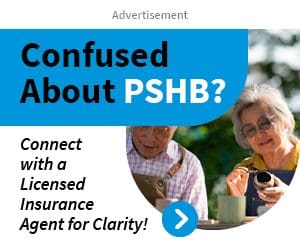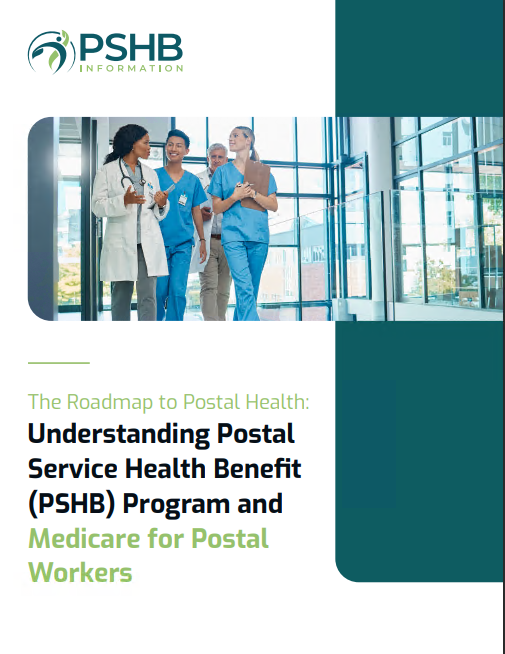Key Takeaways:
- The Postal Service Health Benefits (PSHB) program now mandates Medicare Part B enrollment for eligible retirees, significantly affecting healthcare coverage for USPS employees.
- These changes, effective January 1, 2025, are critical for USPS employees nearing retirement to understand how they will impact healthcare costs and coverage options.
USPS Employees, Here’s How the New Medicare Part B Rules in PSHB Will Impact You
The recent transition to the Postal Service Health Benefits (PSHB) program, mandated by the Postal Service Reform Act of 2022, brings significant changes to healthcare coverage for USPS employees and retirees. Starting January 1, 2025, eligible Postal Service retirees must enroll in Medicare Part B as a condition of maintaining coverage under the PSHB program. This article explores the implications of these changes, helping USPS employees navigate their health benefits and understand what these new rules mean for their future.
Understanding the Postal Service Health Benefits (PSHB) Program
The Postal Service Health Benefits program is set to replace the existing Federal Employees Health Benefits (FEHB) program specifically for Postal Service employees and retirees. The PSHB was created to stabilize the financial health of the USPS by reducing healthcare costs while ensuring that employees and retirees continue to receive comprehensive healthcare coverage. This shift is particularly important as it mandates the integration of Medicare for eligible retirees, marking a significant departure from previous coverage options under the FEHB.
Key Changes to Medicare Enrollment Under PSHB
One of the most critical changes introduced by the PSHB program is the requirement for Medicare-eligible retirees to enroll in Medicare Part B. Previously, retirees could choose whether or not to enroll in Medicare Part B without affecting their FEHB coverage. However, under the new rules, failure to enroll in Medicare Part B will result in the loss of PSHB coverage.
What is Medicare Part B, and Why is it Important?
Medicare Part B is a component of the Medicare program that covers outpatient medical services, including doctor visits, preventive services, and certain types of durable medical equipment. It complements Medicare Part A, which covers inpatient hospital care. For USPS retirees, enrolling in Medicare Part B under the new PSHB rules is essential to maintaining their overall health coverage. Without Part B, retirees could face significant gaps in coverage, leading to higher out-of-pocket costs for medical services.
The Enrollment Process and Deadlines
USPS retirees who become eligible for Medicare on or after January 1, 2025, must enroll in Medicare Part B during their Initial Enrollment Period (IEP) or the Special Enrollment Period (SEP) to maintain their PSHB coverage. The IEP typically begins three months before the month of a retiree’s 65th birthday and ends three months after that month, providing a seven-month window for enrollment.
For current retirees who are already eligible for Medicare but have not enrolled in Part B, a Special Enrollment Period will be available from April 1, 2024, to September 30, 2024. During this time, these retirees can enroll in Medicare Part B without facing a late enrollment penalty, ensuring they maintain their PSHB coverage starting January 1, 2025.
How Will the New Rules Impact Healthcare Costs?
The requirement to enroll in Medicare Part B will directly impact healthcare costs for USPS retirees. While Part B does require a monthly premium, this cost is balanced by the reduction in out-of-pocket expenses for medical services that would otherwise not be covered. Additionally, with the coordination of benefits between Medicare Part B and PSHB, retirees can expect more comprehensive coverage, potentially lowering their overall healthcare spending.
Coordination of Benefits Between Medicare and PSHB
Once enrolled in Medicare Part B, PSHB will act as a secondary payer, covering the costs that Medicare Part B does not fully pay. This coordination of benefits ensures that retirees have more extensive coverage, reducing the likelihood of high out-of-pocket expenses. It’s important for retirees to understand how this coordination works to fully benefit from the coverage available to them under the new PSHB rules.
The Impact on Prescription Drug Costs
One area where the PSHB and Medicare Part B coordination will have a significant impact is prescription drug coverage. While Medicare Part B covers certain outpatient prescription drugs, most prescription drug coverage is provided through Medicare Part D. Retirees must ensure that they understand how their PSHB plan integrates with Medicare Part D to avoid coverage gaps and manage their prescription drug costs effectively.
Navigating the Transition: Steps USPS Employees Should Take
As the PSHB program and the new Medicare Part B rules approach implementation, USPS employees and retirees need to take proactive steps to ensure a smooth transition. Here are some key actions to consider:
Review Current Health Coverage
USPS employees and retirees should begin by reviewing their current health coverage under the FEHB program. Understanding what is currently covered and how the transition to PSHB will change that coverage is critical. Employees should also take stock of any additional coverage they might need, such as dental, vision, or long-term care, and determine how these needs will be met under the new system.
Enroll in Medicare Part B
For those nearing Medicare eligibility, it’s essential to familiarize themselves with the enrollment process and ensure timely enrollment in Medicare Part B. Missing the enrollment window could result in the loss of PSHB coverage, so paying attention to deadlines is crucial. Retirees should also consider the financial implications of the Part B premium and budget accordingly.
Consult with a Licensed Insurance Agent
Given the complexity of the transition to PSHB and the new Medicare Part B requirements, consulting with a licensed insurance agent can provide valuable guidance. These professionals can help retirees navigate the enrollment process, understand the coordination of benefits, and ensure they make informed decisions about their healthcare coverage.
Stay Informed About Future Changes
The healthcare landscape is constantly evolving, and staying informed about future changes to the PSHB program and Medicare is essential. USPS employees should regularly check for updates from the USPS, the Office of Personnel Management (OPM), and Medicare to ensure they have the most current information.
Preparing for Retirement Under PSHB
For USPS employees nearing retirement, understanding how the PSHB program and Medicare Part B will impact their retirement planning is crucial. Here are some considerations to keep in mind:
Assessing Retirement Healthcare Needs
As retirement approaches, it’s important to assess future healthcare needs and how they will be met under the PSHB program. Consider factors such as chronic health conditions, anticipated medical expenses, and the need for additional coverage beyond what is offered by Medicare and PSHB. Planning for these needs can help ensure a secure and healthy retirement.
Budgeting for Healthcare Costs
The transition to PSHB and the requirement to enroll in Medicare Part B will introduce new healthcare costs, including the Medicare Part B premium. Retirees should carefully budget for these costs, taking into account potential changes in income after retirement. It’s also important to consider how these costs will fit into the overall retirement budget, ensuring that healthcare expenses do not strain financial resources.
Exploring Supplemental Coverage Options
In addition to Medicare Part B and PSHB coverage, retirees may want to explore supplemental coverage options, such as Medigap policies, to further reduce out-of-pocket expenses. These policies can help cover costs not paid by Medicare, such as copayments, coinsurance, and deductibles, providing additional financial protection in retirement.
Moving Forward with Confidence
The transition to the Postal Service Health Benefits program and the new Medicare Part B rules represent a significant shift for USPS employees and retirees. However, by staying informed, planning ahead, and taking proactive steps, employees can navigate this transition with confidence. Understanding the impact of these changes on healthcare coverage and costs is key to making informed decisions that will support a secure and healthy retirement.
Ensuring Your Healthcare Future
Navigating the new Medicare Part B rules within the PSHB program is essential for USPS employees and retirees. By understanding these changes and preparing for the transition, individuals can ensure they continue to receive the comprehensive healthcare coverage they need. Consulting with licensed insurance agents and staying informed about ongoing updates will help in making the best decisions for the future.
Contact Information:
Email: [email protected]
Phone: 6155552345





